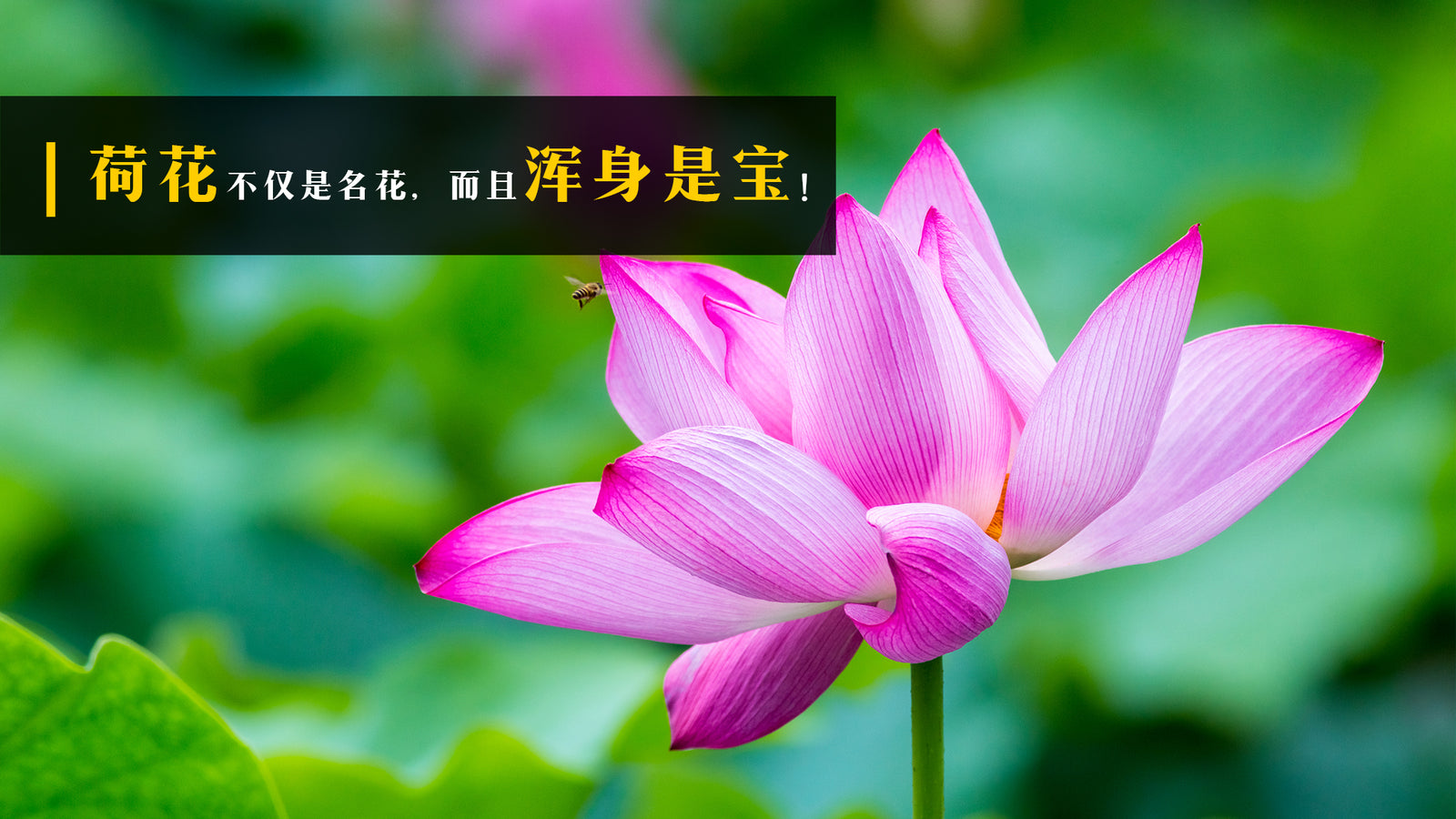Your Cart is Empty
🚛 FREE SHIPPING for order RM 120 & above
🚛 FREE SHIPPING for order RM 120 & above
🚛 FREE SHIPPING for order RM 120 & above
【不是中藥 itsherbs.com】Body Types
[不是中藥 itsherbs.com] Health Tips
【不是中藥 itsherbs.com】Media Reports • Announcement
【不是中藥 itsherbs.com】Body Types
8 major constitutions of traditional Chinese medicine
[不是中藥 itsherbs.com] Health Tips
Chinese Medicine // Wellness // Knowledge
【不是中藥 itsherbs.com】Media Reports • Announcement
Media Coverage • Announcements
4 min read
Traditional Chinese medicine believes that lotus flowers have the effects of clearing heat and relieving summer heat, lotus roots can cool the blood and disperse stasis, and lotus seeds can nourish the heart and benefit qi. Including lotus seed pods, lotus stamens, lotus leaves, and lotus stems, every part of the lotus is valuable and can be used in medicinal cuisine.

"The lotus flower is not only a famous flower but also a treasure in every part." According to the "Compendium of Materia Medica," the lotus flower, lotus seeds, lotus seed coats, lotus seed pods, lotus stamens, lotus seed hearts, lotus leaves, lotus stems, and lotus rhizome nodes are all medicinally useful.
From the perspective of nature, taste and efficacy,
Lotus flower: It has a sweet and bitter taste and a warm nature, with effects of activating blood circulation to stop bleeding, removing dampness and dispelling wind.
Lotus leaf: tastes sweet and slightly bitter, has the effects of clearing summer heat and dampness, promoting the rising of clear yang, cooling the blood, and stopping bleeding.
Lotus stamen (the male part of the lotus flower): sweet and astringent in taste, neutral in nature, with effects of clearing the heart, consolidating essence, and stopping bleeding.
Lotus stalk: bitter taste, neutral nature, has effects of relieving summer heat and dampness, stopping diarrhea, and stopping bleeding.
Lian Di: bitter in taste, neutral in nature, has the effects of harmonizing the stomach and stabilizing pregnancy, stopping leucorrhea and bleeding, and tonifying the middle and benefiting qi.
Lotus root: sweet and neutral in taste, with effects of clearing heat and cooling the blood,relieving constipation and diarrhea, strengthening the spleen and stimulating appetite,nourishing the blood and promoting tissue regeneration.
Lotus root node: sweet and astringent in taste, neutral in nature, with effects of stopping bleeding and resolving blood stasis.
Lotus seed pod: bitter and astringent in taste, warm in nature, with effects of resolving blood stasis, stopping bleeding, and dispelling dampness.
Lotus seeds: sweet and astringent in taste, neutral in nature, with effects of nourishing the heart and benefiting qi, strengthening the spleen, and stopping diarrhea.
Lotus seed heart (the embryo of the lotus seed): bitter in taste, cold in nature, with the effects of astringing essence and stopping bleeding.

"Lotus root and lotus seeds are the most commonly consumed parts," and they are generally suitable for all people. Among them, lotus root is especially suitable for the elderly, children, women, and the weak or sick, particularly beneficial for patients with high fever, hemoptysis, liver disease, loss of appetite, iron-deficiency anemia, and malnutrition. However, lotus root has a cooling nature, so postpartum women should not consume it too early; those with weak spleen and stomach digestive function or loose stools should avoid eating it raw.
Lotus root can be eaten raw, cooked, juiced, or dried and ground into powder for porridge. Both raw and cooked lotus root are suitable for stir-frying, stewing, frying, and as ingredients in dishes, such as "Eight Treasure Stuffed Lotus Root." When selecting lotus root for consumption, choose those with yellow-brown skin, thick and white flesh. If it is blackened or has an off smell, it should not be eaten. Uncut lotus root can be kept at room temperature for up to a week, but since lotus root easily turns black and the cut holes tend to rot, cut lotus root should be covered with plastic wrap at the cut surface and refrigerated for about a week.
Lotus seeds are especially suitable for people with weak constitutions, palpitations, insomnia with excessive dreaming, and seminal emission; those with spleen deficiency, chronic diarrhea; and women with excessive leukorrhea due to spleen and kidney deficiency. People who usually suffer from constipation or abdominal bloating should avoid eating them. Lotus seeds should be peeled before consumption.

Although lotus stems and lotus stamens can also be used as medicine, in daily diet, besides the rhizomes and fruits, the most commonly used parts are the lotus flower, lotus leaves, and lotus seed pods. The usual method is to boil these parts in water, add rock sugar, and make a seasonal herbal tea that clears heat and relieves summer heat.
Lotus flowers and lotus leaves have the same effects and are used for people suffering from summer heat thirst, headaches, dizziness, edema, poor appetite with abdominal distension, diarrhea, prolapse of the rectum, vomiting blood, coughing up blood, blood in stool, leukorrhea, metrorrhagia, postpartum lochia retention, trauma with blood stasis, and other symptoms. However, those who are thin and have weak qi and blood should use with caution. Lotus seed pods can be boiled into a soup with rock sugar and consumed, suitable for people with nosebleeds, abdominal pain due to blood stasis, excessive leukorrhea, and similar conditions.
Lotus has a slightly bitter and cold nature, and eating too much can easily cause diarrhea. Although it is a good remedy for heatstroke, attention should be paid to the dosage when consuming it. The dosage varies for different parts of the lotus. Per person, the dosage range for lotus stamens is 2-5g, for lotus seed pods is 5-10g, for lotus leaves is 3-10g, and for lotus stems is 10-15g (referring to the dried weight; the fresh weight is about five times the dried weight).
